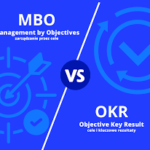In today’s fast-paced world, educational institutions face the challenge of managing a vast array of administrative tasks. From student enrollment to faculty management and financial operations, the need for a centralized solution has become critical. This is where a Campus Management System (CMS) comes into play. Designed to streamline operations and enhance the overall efficiency of educational institutions, CMS platforms have revolutionized how campuses are managed. In this blog, we’ll dive into what a Campus Management System is, its key features, benefits, and why it is essential for modern-day educational institutions.
1. What is a Campus Management System (CMS)?
A Campus Management System is an integrated software solution designed to manage and automate the various administrative and academic tasks of educational institutions. It serves as a centralized hub that connects students, faculty, administrators, and other stakeholders, ensuring smooth communication and efficient management of campus activities.
Whether it’s managing admissions, tracking student attendance, or overseeing financial operations, a CMS simplifies the complexities of campus management, allowing educational institutions to focus on what matters most – education.
2. Key Features of a Campus Management System
A robust CMS comes equipped with a wide range of features that streamline campus operations. Here are some of the key functionalities:
- Student Information Management: A CMS maintains a comprehensive database of student information, including personal details, academic performance, attendance records, and more. This ensures that all relevant data is easily accessible to administrators, faculty, and students.
- Admissions and Enrollment: Automating the admission process is one of the core features of a CMS. From online applications to document verification, the system simplifies student enrollment and saves significant time.
- Attendance Tracking: A CMS provides accurate attendance tracking tools, allowing both students and faculty to monitor attendance records in real-time. This feature helps ensure student accountability and reduces the workload on administrative staff.
- Course and Curriculum Management: Faculty can create, update, and manage course curricula, assignments, and grading systems through the CMS. Students can view their academic progress, register for courses, and access learning materials.
- Fee Management: Managing finances can be complex for institutions. A CMS automates fee collection, tracks payments, and generates financial reports, simplifying the financial management process.
- Communication Tools: The system integrates communication tools such as email, notifications, and instant messaging, fostering better interaction between students, faculty, and administrators.
- Library Management: A CMS also provides features for managing library resources, including book catalogs, issuance records, and return tracking, ensuring efficient operation of the campus library.
Read More Here
3. Benefits of Implementing a Campus Management System
The implementation of a CMS brings a multitude of benefits to educational institutions, faculty, students, and even parents. Here are some of the most prominent advantages:
- Efficiency in Administration: A CMS reduces manual work by automating administrative tasks such as admissions, attendance tracking, and fee collection. This frees up time for staff to focus on more strategic tasks.
- Enhanced Student Experience: Students have easy access to their academic records, schedules, and assignments, creating a more organized and supportive learning environment. It also enables students to track their progress and stay updated on campus events.
- Improved Communication: The CMS streamlines communication between various stakeholders. Notifications, updates, and reminders are instantly sent to students, faculty, and parents, fostering a more connected and transparent campus environment.
- Data-Driven Decision Making: By providing detailed reports and analytics, a CMS enables administrators to make informed decisions. These insights can help identify areas for improvement and optimize campus operations.
- Cost and Time Savings: Automating repetitive tasks, reducing paperwork, and digitizing operations contribute to significant cost and time savings. Educational institutions can allocate their resources more effectively to enhance academic quality.
- Increased Security: With a centralized digital system, sensitive data related to students, faculty, and finances is stored securely. Role-based access ensures that only authorized personnel can access specific information, enhancing data privacy.
4. Types of Campus Management Systems
Different educational institutions have varying needs, and CMS platforms are designed to cater to these differences:
- School Management System: This type of CMS is tailored for primary and secondary schools, focusing on student enrollment, daily attendance tracking, and parent communication.
- College Management System: For higher education institutions like colleges and universities, these systems offer more advanced features such as course management, grading systems, and financial reporting.
- Enterprise Campus Management System: Large institutions or educational groups require enterprise-level CMS platforms that offer scalability, multi-campus management, and integration with third-party systems.
5. Challenges of Implementing a Campus Management System
Although a CMS provides many benefits, there are also some challenges that institutions may face during implementation:
- Initial Costs: The upfront investment in purchasing and implementing a CMS can be high, especially for smaller institutions. However, these costs are usually offset by long-term savings.
- Training and Adoption: Introducing a CMS requires time and training for staff, students, and faculty to become proficient in using the system. Institutions must invest in training programs to ensure smooth adoption.
- Customization Needs: Each institution has unique needs, and a one-size-fits-all CMS may not be sufficient. Customization may be required to fit specific operational requirements, which could extend the implementation timeline.
6. Why Your Institution Needs a Campus Management System
With educational institutions increasingly turning to technology to manage their campuses, having a CMS is no longer a luxury but a necessity. The demand for remote learning, coupled with the need for greater operational efficiency, makes CMS platforms a crucial tool for modern-day education.
A CMS not only reduces the administrative burden on staff but also enhances the student experience, improves communication, and provides real-time data for decision-making. In an era where education is rapidly transforming, adopting a Campus Management System ensures that your institution stays ahead of the curve.
7. Choosing the Right Campus Management System
Choosing the right CMS for your institution involves evaluating your specific needs and ensuring that the platform you choose offers scalability, ease of use, and the features required to manage your operations effectively. Factors to consider include:
- Ease of Integration: Can the CMS integrate with your existing systems, such as learning management systems (LMS) or financial software?
- User-Friendly Interface: Is the system easy to navigate for students, faculty, and administrators?
- Support and Training: Does the provider offer adequate training and ongoing support for users?
8. Conclusion
A Campus Management System is a game-changer for educational institutions looking to streamline operations and improve the learning experience. With the right CMS, schools, colleges, and universities can automate administrative tasks, enhance communication, and make data-driven decisions that lead to better academic outcomes. As educational institutions continue to embrace technology, a well-implemented CMS is the key to staying competitive and future-ready.



